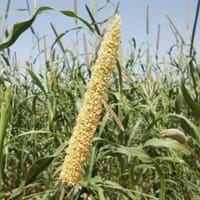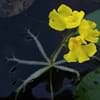Life Span
Perennial
Annual
Origin
Northeastern United States, Mid-Atlantic United States, Southeastern United States, North-Central United States, Central United States, South-Central United States, Canada
Hybrid origin
Types
Not Available
Not available
Habitat
Moist Soils, Terrestrial, Upland, Wet lands
Cultivated Beds, Riverbanks
USDA Hardiness Zone
3-11
8-11
AHS Heat Zone
11-1
12 - 8
Sunset Zone
21,22
A1, A2, A3, H1, H2, 1a, 1b, 2a, 2b, 3a, 3b, 4, 5, 6, 7, 8, 9, 10, 11, 12, 13, 14, 15, 16, 17, 18, 19, 20, 21, 22, 23, 24
Habit
Thicket/Colonizing
Upright/Erect
Flower Color
White
Non Flowering Plant
Flower Color Modifier
Not Available
Bicolor
Fruit Color
Brownish Red
Sandy Brown, Tan
Leaf Color in Spring
Green, Dark Green
Green, Dark Green
Leaf Color in Summer
Green, Dark Green
Light Green
Leaf Color in Fall
Green, Dark Green
Green, Gold
Leaf Color in Winter
Not Available
Not Available
Leaf Shape
Heart-shaped
Long slender
Plant Season
Spring, Summer, Fall
Summer, Fall
Sunlight
Full Sun, Partial Sun, Partial shade
Full Sun
Growth Rate
Medium
Very Fast
Type of Soil
Loam
Clay, Loam, Sand
The pH of Soil
Acidic, Neutral
Neutral, Alkaline
Soil Drainage
Average
Well drained
Bloom Time
Summer
Early Summer, Summer, Late Summer, Early Fall
Where to Plant?
Container, Ground, Pot
Ground
How to Plant?
From Rhizomes, Root Division
Seedlings
Plant Maintenance
Medium
Low
Watering Requirements
Needs Very high moisture
Average Water Needs
In Summer
Lots of watering
Lots of watering
In Spring
Moderate
Moderate
In Winter
Average Water
Average Water
Soil pH
Acidic, Neutral
Neutral, Alkaline
Soil Type
Loam
Clay, Loam, Sand
Soil Drainage Capacity
Average
Well drained
Sun Exposure
Full Sun, Partial Sun, Partial shade
Full Sun
Pruning
Remove damaged leaves, Remove dead branches, Remove dead leaves
Remove damaged leaves, Remove dead branches, Remove dead leaves
Fertilizers
All-Purpose Liquid Fertilizer
All-Purpose Liquid Fertilizer, Soil test crop response correlation (STCR) based integrated fertilizer
Pests and Diseases
bees
Bacterial leaf spot, Curvularia blotch, Downy mildew, Rust
Plant Tolerance
Drought
Salt
Flower Petal Number
Single
Single
Foliage Texture
Medium
Medium
Foliage Sheen
Matte
Not Available
Invasive
Sometimes
Sometimes
Attracts
Bees, Flies, Turtles
Birds
Allergy
allergic reaction, Pollen
Not Available
Aesthetic Uses
Bog Garden, Showy Purposes, Water gardening, Wild gardens
Not Used For Aesthetic Purpose
Beauty Benefits
Not Available
Removes pimples
Environmental Uses
Air purification
Food for animals, Food for birds
Medicinal Uses
Insect Bites, Treating fever
Antioxidants, Appetizer, Heart problems, Tonic
Part of Plant Used
Flowers, Leaves, Root
Fruits, Seeds
Other Uses
Grown in botanical gardens as a specimen, Used as Ornamental plant
Animal Feed, Fibre, Food for animals
Used As Indoor Plant
Sometimes
No
Used As Outdoor Plant
Yes
Yes
Garden Design
Container, Water Gardens, Wildflower
Bedding Plant, Container, Dried Flower/Everlasting, Edible, Herb / Vegetable, Mixed Border
Botanical Name
SAURURUS cernuus
PENNISETUM glaucum
Common Name
Lizard's Tail
Millet, Pearl Millet
In Hindi
Saururus cernuus
बाजरा
In German
Saururus cernuus
Perlhirse
In French
Saururus cernuus
Perle Millet
In Spanish
cernuus Saururus
El mijo perla
In Greek
Saururus cernuus
μαργαριτάρι Κεχρί
In Portuguese
Saururus cernuus
milheto
In Polish
Saururus cernuus
Pearl Millet
In Latin
Saururi cernuus
Pearl milium
Phylum
Tracheophyta
Magnoliophyta
Class
Magnoliopsida
Liliopsida
Order
Piperales
Cyperales
Family
Saururaceae
Poaceae
Genus
Saururus
Pennisetum
Clade
Angiosperms, Magnoliids
Angiosperms, Commelinids, Monocots
Tribe
Not Available
Paniceae
Subfamily
Not Available
Panicoideae
Number of Species
Not Available
Importance of Saururus cernuus and Pearl Millet
Want to have the most appropriate plant for your garden? You might want to know the importance of Saururus cernuus and Pearl Millet. Basically, these two plants vary in many aspects. Compare Saururus cernuus and Pearl Millet as they differ in many characteristics such as their life, care, benefits, facts, etc. Every gardener must at least have the slightest clue about the plants he wants to plant in his garden. Compare their benefits, which differ in many ways like facts and uses. The medicinal use of Saururus cernuus is Insect Bites and Treating fever whereas of Pearl Millet is Antioxidants, Appetizer, Heart problems and Tonic. Saururus cernuus has beauty benefits as follows: Not Available while Pearl Millet has beauty benefits as follows: Not Available.
Compare Facts of Saururus cernuus vs Pearl Millet
How to choose the best garden plant for your garden depending upon its facts? Here garden plant comparison will help you to solve this query. Compare the facts of Saururus cernuus vs Pearl Millet and know which one to choose. As garden plants have benefits and other uses, allergy is also a major drawback of plants for some people. Allergic reactions of Saururus cernuus are allergic reaction and Pollen whereas of Pearl Millet have Not Available respectively. Having a fruit bearing plant in your garden can be a plus point of your garden. Saururus cernuus has no showy fruits and Pearl Millet has showy fruits. Also Saururus cernuus is not flowering and Pearl Millet is not flowering . You can compare Saururus cernuus and Pearl Millet facts and facts of other plants too.





